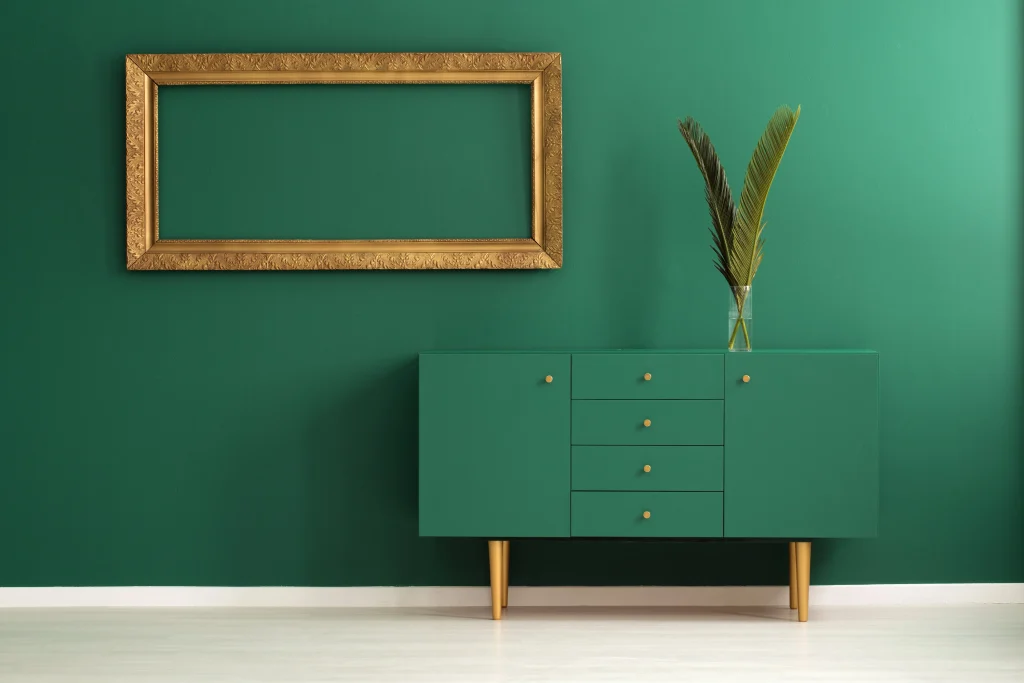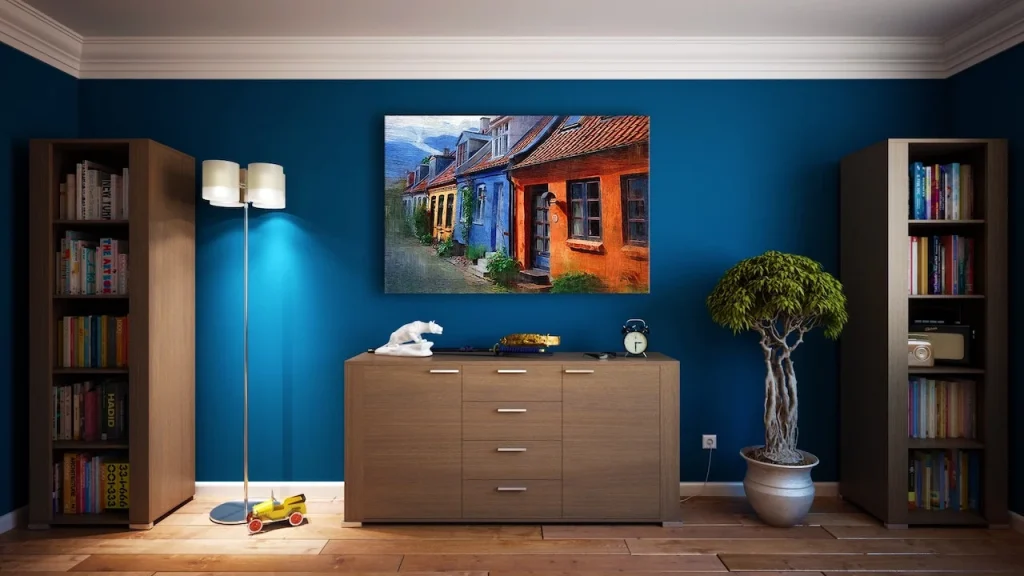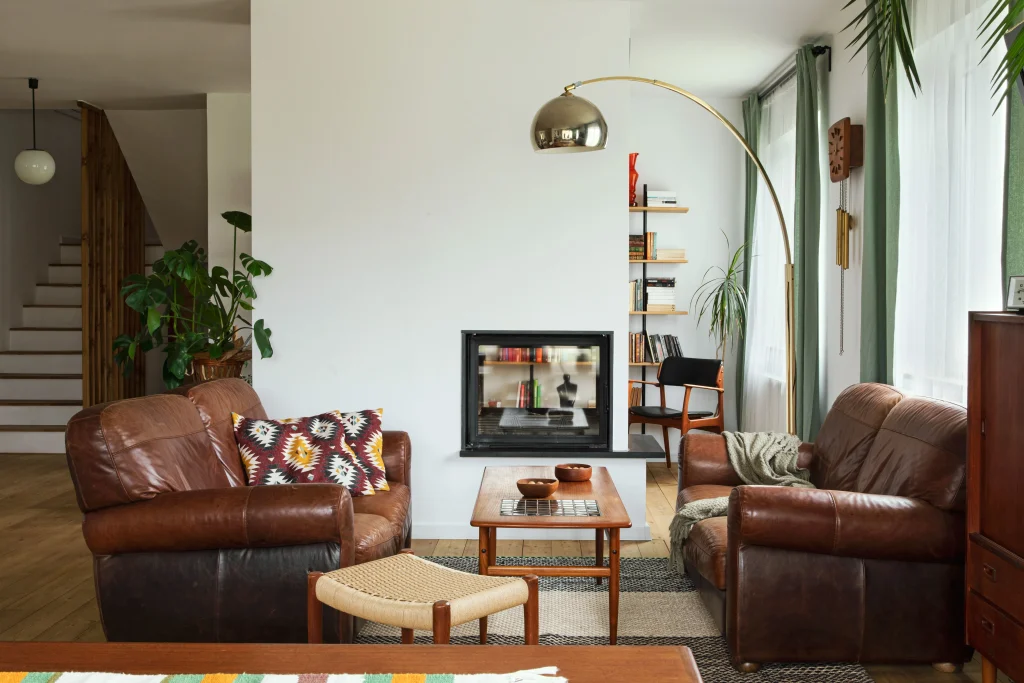In improving the aesthetic of your house in order to turn it from just any other proper to the safe haven that you call your home, interior design is an aspect of house organization that must not be overlooked. This is where the usefulness of the 60-30-10 rule comes into play to achieve a balanced color palette or balanced color scheme.
What Is the 60-30-10 Rule?
The 60-30-10 rule is purposed for creating visual balance in a room through the use of colors. With the “rule of thirds” as the basis, the numbers in 60-30-10 refer to proportions (60%, 30%, 10%) in which the sum of the three makes up 100%.

For example, a room in a Cavite house and lot is divided into 60-30-10 as reference. 60% of a room is the large spaces within the room, such as the floor, walls, and ceiling. The 30% comprise the notable features of the room such as furniture, carpets, and the wood trim that line the doors, windows, walls, and the like. The 10% are the smaller decorations and ornaments, such as paintings, vases, and the like. Given this, the 60-30-10 is applied to the use of colors in a room.
How Is the 60-30-10 Rule Used in Relation to Colors in Interior Design?
Using the previous analogy as a reference, 60% of a room, which comprises the biggest parts of the room, will have a dominant color that “anchors” the space of the room. Typically, the dominant color will be present on the wall color and floor all throughout the room, like one in a Cavite house and lot. Larger furniture and carpets may be included as well. The 60% in this context will be the dominant color from which you will build the color palette of the room on.
On the other hand, 30% of a room, which are the more medium-sized features of a room, will have a color that is supposed to complement and support the dominant color assigned to the 60% of the room. The 30%, in this case, includes furniture that is placed within the room, curtains, bed linens, accent chairs, area rugs, accent walls, painted furniture, tapestries or textiles decorated around the room, and lighting fixtures around the room. It is good to find combinations of varied tones of color so that the room in the Cavite house and lot will have more depth.
Lastly, the 10% rule of a room will have what is called an “accent” color. The 10% rule, which in this context involves the smallest features of the room, like lamps, throw pillows, and the like, is given more freedom for experimentation in regards to not just color, but also textures and patterns. You can apply your own sense of design through the use of wood tones or natural wood, or have bright colors like green yellow, or darker variations 0r varying shades of colors. Some homeowners prefer to make bold choices when it comes to exploring how they want the 10% rule of their room to be designed; and if you are one of those homeowners, then the freedom to explore is yours.

Can You Break the 60-30-10 Rule?
When looking at the word “rule,” it makes one wonder if the 60-30-10 rule is something that should always be followed when it comes to the color scheme of a room’s interior design. The 60-30-10 does not always have to be followed, and there are other homeowners who do not follow it. Although, many homeowners, perhaps one who may own a Cavite house and lot, follow the rule because of the convenience it provides when deciding color choices. If you are considering going for a color scheme other than the 60-30-10 rule, however, there are still options for you to go for that still achieve cohesion in terms of a room’s color combination.
Going for a 60-30-10-10 color scheme
A 60-30-10-10 color scheme for a room follows the same format as the 60-30-10 rule. What’s different with going for 60-30-10-10, however, is that you get to use two different accent colors instead of just one. Perhaps you can have throw pillows of two different colors.
Analogous color scheme
Analogous colors are colors that are next to each other in the color wheel. Applying this to the color scheme of your room in a Cavite house and lot, you can choose three colors that are next to each other on the color wheel as the colors that will comprise your room. Typically, the color in the middle of the three colors you have chosen will serve as the main color of your room or the color that is assigned to 60% of your room.
Monochromatic color scheme
A monochromatic color scheme for a room means that you essentially use one main color, in which the secondary and accent color or accent colors are just different shades of the main color, compared to having three different colors in the 60-30-10 rule. The use of neutral color in a monochromatic color scheme can be able to give a relaxing feel to your room, such as using light blue in a monochromatic blue room or light gray in a monochromatic grey room.
Complimentary color scheme
The use of complimentary colors in the color palette of the interior design in a room, like one in a Cavite house and lot, focuses on the use of two colors that are opposite to each other in the color wheel. The contrast of these colors will have one color feel “warm” and the other color feels “cool.” As a result, the colors will neutralize each other and create visual balance in your room; and perhaps it might even enhance the presence of the accent color in the room.
Split complementary color scheme
This color scheme uses the complementary color scheme as a basis and adds to it. With the two colors, you have chosen as complimentary colors, look for the color that is opposite to your chosen dominant color on the color wheel, and look for the color right next to this opposite color. This color can serve as your accent hue for the 10% in your room.

Experiment with your own combinations
As a homeowner, whatever color palette comes to fruition in the rooms of your house, like a Cavite house and lot, is ultimately up to you. You can even have the same color for any two percentages of the rule if you prefer. If you feel that you have color combinations of lighter and darker variations of a dominant color, secondary color, and accent color in mind that would work well, then you have the freedom to experiment. You can also experiment with different color schemes that have a vibrant middle color, one with a neutral primary color, or natural material integrated into the room with white walls or colors opposite to each other.
See what colors on the color wheel fit the balance and depth that you want and are eye-catching to you for the room. It is also good to seek another person’s opinion or even the professional opinion of an interior designer so that you can ensure that the color scheme of the rooms in your house not only gives you a pleasurable visual but also give off a good impression to guests at your house.


